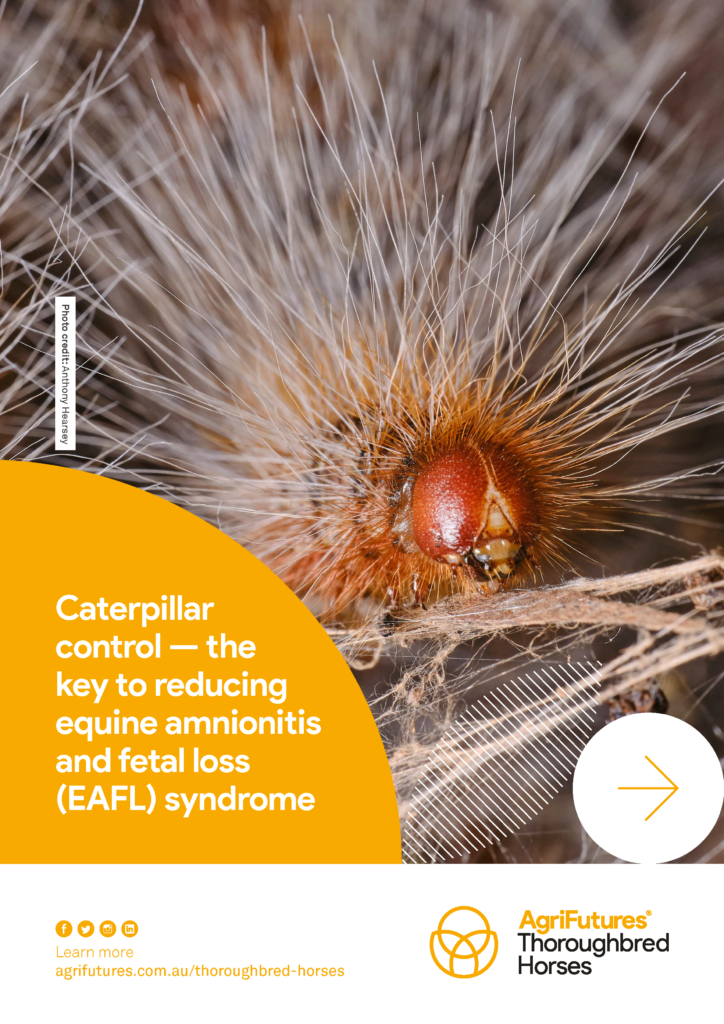Exposure to hairy processionary caterpillars (Ochrogaster lunifer), or their nest material, can damage tissues in the amnion, umbilical cord and placenta of developing fetuses, resulting in mid-to late-term abortion, or birth of premature, weak and underdeveloped foals. The condition is known as equine amnionitis and fetal loss (EAFL) syndrome.
Mares are most likely to be at greatest risk of exposure to caterpillars from March – June while grazing around trees where nests are present; when they encounter head-to-tail processions as caterpillars move from one tree to another; when mature caterpillars leave trees to pupate in pasture; and if they disturb old nest material after caterpillars have left the nest to pupate.
Horses can accidentally ingest microscopic, barbed caterpillar setae while grazing or feeding. The setae migrate through the lining of the gastrointestinal tract (carrying with them environmental and gut bacteria) and invade the deeper tissues including the uterus in pregnant mares. This can lead to severe infection, resulting in fetal death and abortion.
Focal mucoid placentitis, a different presentation of EAFL, refers to an area of infection and exudate that occurs between the lining of the uterus and the chorionic (red, velvety) surface of the placenta, which affects the transfer of nutrients to the fetus. This can result in small, but live, foals or fetal death and abortion.
In all cases of EAFL, signs of infection may not be apparent until the placenta is examined after abortion or after the foal is born.
This resource was produced as part of an AgriFutures Thoroughbred Horse Program project, utilising research outcomes from the University of Queensland (UQ). UQ’s research was supported by a UQ Collaboration and Industry Engagement Fund (CIEF) grant, the Hunter Valley Equine Research Foundation (HVERF), and an Australian Research Council (ARC) Linkage Project grant (LP140100687).





